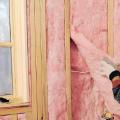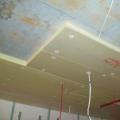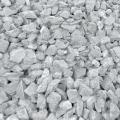Types and descriptions of building materials for house walls
Until now, there is no unequivocal answer to the question of what material is better to make the walls of a residential building. Each of them has its own advantages and disadvantages. Builders and designers cannot agree on the choice of the most optimal product for making walls. The thing is that in each case, the best material must be selected based on the purpose of the building, its configuration, the climatic conditions of the area and the financial capabilities of the owner. In our article, we will consider the most common wall materials, describe their properties, pros and cons, and you yourself will be able to choose the best one based on the construction conditions.
Factors affecting the choice
A quarter of all construction costs go to building walls. Since the wrong material for building walls in the future can lead to even more expenses, the following factors should be taken into account when choosing it:
- If you want to save on arranging the foundation by making a shallow lightweight option, then choose a light material for the walls. Additional savings in the case of using light elements for the walls of the house will be during transportation and installation, because it can be done by hand without the use of expensive lifting equipment.
- Choose building materials that have good thermal insulation characteristics. Otherwise, cold walls in winter will cost you dearly due to heating costs.
Tip: it is best to perform a heat engineering calculation taking into account the climatic conditions of the construction region. This is the only way to be sure that you have chosen the right material and wall design. So, in the northern regions of our country, even walls made of materials with high thermal insulation properties need to be insulated.
- If piece materials, for example, bricks, are used to build the walls of the house, then a significant proportion of the costs will be the cost of paying masons. Even if you do all the work yourself, then consider the time and physical costs. It is much more profitable and faster to build from large-sized elements. The highest speed of wall construction is for houses built using frame-panel and frame-panel technology.
- When choosing building materials for walls, it is worth considering how easy they are to finish and whether they need it at all. For example, the walls of an OSB frame house can not be finished at all, but simply painted, and a log house needs a thorough finish outside and inside.
To understand what to build your house from, you need to understand the characteristics of building materials, so further we will describe the properties of each of them, list the advantages and disadvantages.
Brick

A house built of brick can stand for a century, or even a century and a half. There are many varieties of bricks that differ in important operational and technical characteristics.
So, for the construction of walls, silicate and ceramic types of bricks are used. Consider their features:
- ceramic brick made from fired red clay. It is durable, moisture resistant, environmentally friendly material. On sale there is a corpulent and hollow brick. The more voids in a brick, the higher its thermal insulation performance.
- silicate brick is made on the basis of lime, sand and some additives. It also happens to be full-bodied and hollow. The latter option is characterized by lightness and improved thermal insulation qualities. Silicate full-bodied products are distinguished by good sound-proofing properties, but high thermal conductivity.
Also, this wall material is divided into front and ordinary:
- It is better to build the walls of the house from ordinary brick. Products may have small defects in the form of cracks and chips, but due to this, their price is more acceptable. In addition, for the internal masonry of walls, the appearance of the product is not as important as for the front masonry.
- Facing brick (front)- this is the wall material with which the facade is made out. All products must have the correct geometric shape, smooth or embossed surface, be free of flaws and defects. The price of a front brick is higher than that of its ordinary counterpart.
The strength of this wall material is directly related to its brand, which can be from M 75 to M 300. The number indicates the load that one square centimeter of the product can withstand. The higher the brand, the greater the specific gravity of the product. To build a 2 or 3-storey house, brick grade 100-125 is enough. To perform the foundation and base, products with the brand 150-175 are used.
Also, when choosing a brick, it is important to take into account its frost resistance, that is, the number of freeze and thaw cycles that the product can withstand without damage and a decrease in strength by no more than 20%. This indicator is marked with the letter F and a number from 15 and above. For warm regions, you can use products with a frost resistance grade of 15; in colder latitudes, bricks of the F25 grade are used. For facing work, a brick with a frost resistance of at least 50 is suitable.
Advantages and disadvantages of brick

Among the advantages of this wall material, it is worth listing the following:
- Impressive service life.
- aesthetic appeal.
- Unlimited possibilities in terms of design and implementation of the most complex projects.
- The material is not susceptible to corrosion, damage by fungi and microorganisms.
- The product does not burn.
- High sound and heat insulation characteristics.
The disadvantages include the following:
- Due to the small size and large specific gravity, laying brick walls takes a long time and costs a lot.
- Under brick walls, it is necessary to equip a solid buried foundation, and this entails increased costs for materials and earthworks.
- In most cases, brick walls need to be additionally insulated.
ceramic blocks

A ceramic block is a material made from a mixture of clay and sawdust, after which the element is fired in a kiln. This is a fairly durable product that allows you to quickly build the walls of the house. The strength of the ceramic block is so high that a multi-storey building can be made from it. Inside the material has a porous structure, and the outer surface is corrugated. For a tight connection, the ends of the material have grooves and ridges.
The height of the ceramic block is a multiple of the rows of brickwork, and the other dimensions may be different. Thus, it is possible to build from a ceramic block according to projects that are designed for bricks. But the speed of construction is much higher, since one ceramic block measuring 238x248x500 mm, which weighs 25 kg, is equal to 15 bricks, each of which weighs 3.3 kg. In addition to increasing the speed of construction, the cost of mortar is reduced, because it will be needed less.
Important: the width of the ceramic block can be 230, 240 and 250 mm, and the length is in the range of 250-510 mm. On the long side of the product there is a comb-groove lock.
Walls with a thickness of 380 mm or more made of this material do not need to be insulated, since the thermal conductivity of the product is only 0.14-0.29 W / m² x ° C. Marking wide blocks M 100. If you need to make thin but strong walls, then you can take elements marked 150. Frost resistance of ceramic blocks is at least 50 cycles.
Pros and cons of ceramic blocks

The advantages include:
- The low specific weight and high strength significantly expand the scope of this material.
- Installation of large-sized products is carried out quickly and without unnecessary labor.
- Saving mortar due to the size of the elements and the absence of the need to make vertical seams.
- The frost resistance of an ordinary ceramic block is higher than that of an ordinary brick.
- Good fire resistance. The product is able to resist burning for 4 hours.
- An optimal microclimate is created in the room from ceramic blocks, since the walls can "breathe" and regulate the humidity of the air.
- The house can last a century and a half and at the same time will not lose its thermal insulation characteristics.
This material also has disadvantages, among which it is worth mentioning the following:
- The price of ceramic blocks is quite high.
- Since these products are relatively new in our market, it is difficult to find a good mason to perform masonry.
- This fragile material needs to be stored and transported very carefully.
gas blocks
This material has excellent thermal insulation properties. In terms of thermal conductivity, a gas-block wall with a width of 300-400 mm is not inferior to a multi-layer brick structure. Walls of gas blocks maintain optimal temperature and humidity conditions indoors. The material is not subject to rot and has an impressive service life. The thermal insulation qualities of a gas block are 3 times greater than those of a brick wall.
Aerated concrete is quite light, so it is easy to transport and stack. It is easily cut with a regular hacksaw to the desired size. The laying of elements is carried out on a mortar or special glue, which requires little. The smooth, even surface of the gas blocks is easy to finish. Aerated concrete is considered environmentally friendly and non-combustible. It has a fairly high frost resistance.
Attention: for aerated concrete, the density characteristic is important. This indicator can be in the range of 350-1200 kg / m³. For an ordinary residential building, it is enough to take elements marked 500-900.
Advantages and disadvantages of gas blocks

The advantages of this wall product are many:
- The laying of walls from gas blocks is carried out 9 times faster than the laying of bricks.
- The low thermal conductivity of the product is a big plus in its favor.
- Aerated concrete has a high fire resistance, it does not emit harmful substances even during combustion.
- The porous structure of the material contributes to high frost resistance.
- In terms of vapor permeability, aerated concrete is comparable only to wood.
Cons of aerated concrete:
- Low bending strength.
- The material is prone to cracking.
- Hygroscopicity. After absorbing moisture, the thermal insulation performance of aerated concrete decreases, so the facade needs a protective finish.
- It is impossible to lay floor slabs and beams directly on gas blocks, therefore, before laying them, you will have to make a monolithic armored belt. This entails additional costs and time.
Wood

Many people who decide to build a house make a choice in favor of wood. This natural material is environmentally friendly. It creates a favorable microclimate in the house, maintains optimal humidity and saturates the air with healing phytoncides. In a wooden house it is warm in winter and not hot in summer, because wood has good thermal insulation characteristics.
A wooden house can be built from the following products:
- The log can be of natural shape or rounded. In the latter case, the material has a regular shape and a smooth surface, but needs additional protective treatment, since the natural protective resin layer, which is located under the bark, is removed during the cylindering process.
- You can use glued (profiled) and sawn or planed timber. Higher-quality houses are obtained from glued laminated timber, which has special grooves and ridges for a snug fit of the elements. Sawn timber is more often used to make frame houses.
- Frame-panel houses are made of OSB, chipboard, moisture-resistant plywood, which are attached to the frame. Insulation is laid inside the wall.
The main advantages of wooden houses are their environmental friendliness, comfort and reasonable price. Under such a house, you can make a lightweight foundation. Disadvantages - fire hazard, shrinkage.
 Building materials and list of works
Building materials and list of works Proper insulation of a wooden ceiling in a private house
Proper insulation of a wooden ceiling in a private house What are the types of gravel
What are the types of gravel